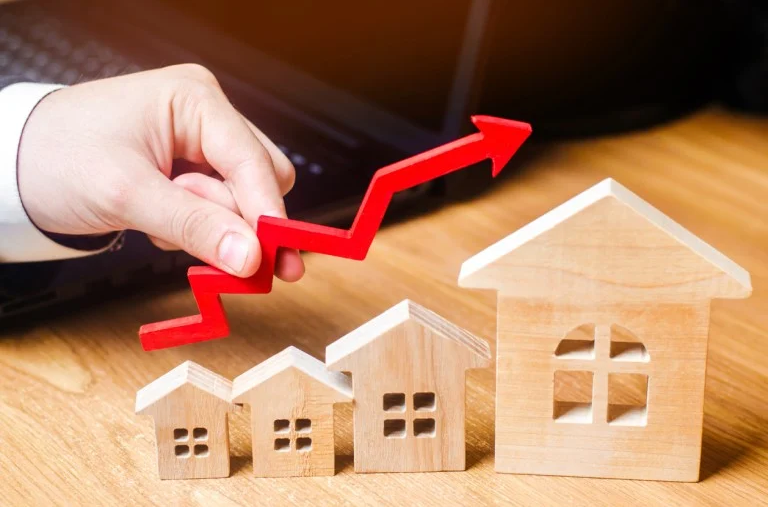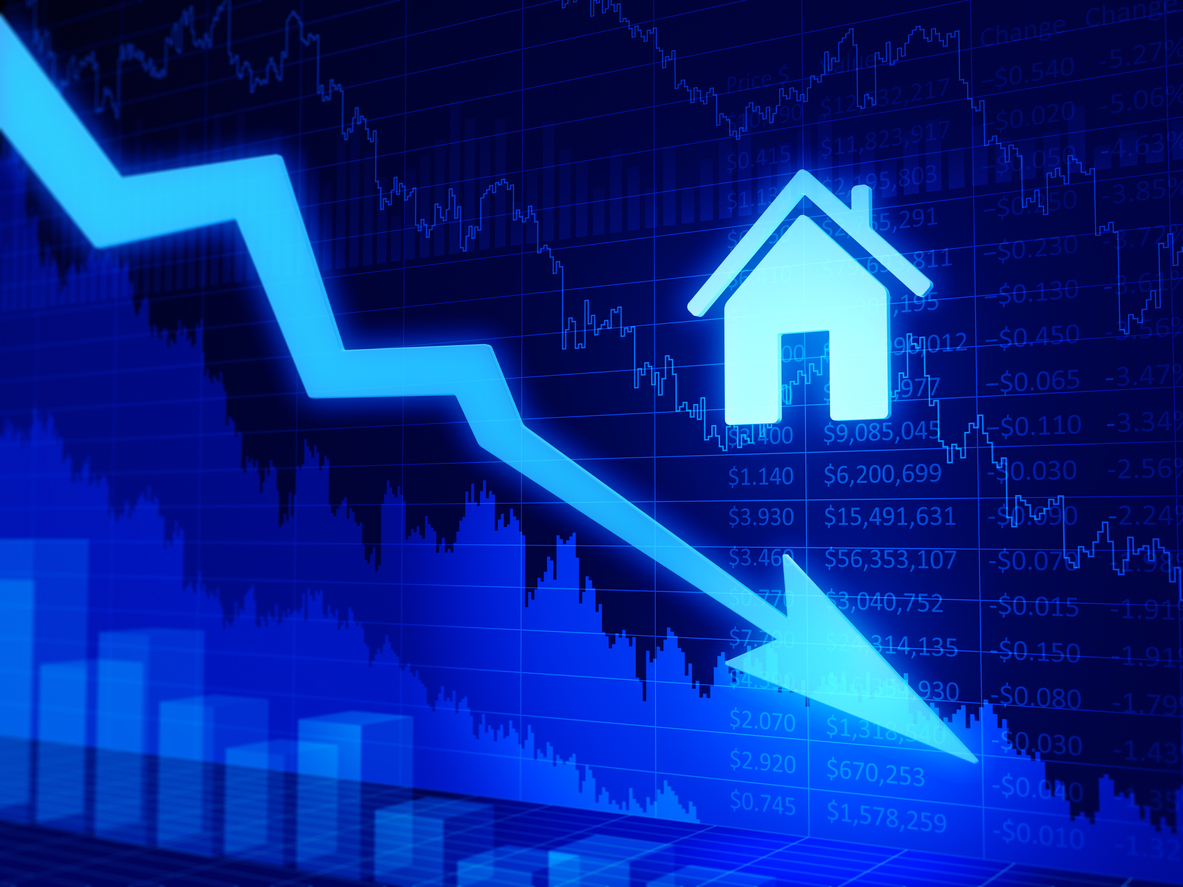The Housing Booms and Busts Since 1975 (And How the Trends Can Prep Us for the Future)
The property market is an ever-shifting landscape that can be challenging to navigate. Luckily, history can teach us some valuable lessons about the market’s ebb and flow.
Rising house prices in Australia can provide the same or higher earnings as a regular job. That’s why it should come as no surprise that the property market has become a national obsession.
However, relying on increasing house prices isn’t as straightforward as it may seem.
Prices can go up, but they can also crash due to several factors. For example, interest rates influence house prices in a complex relationship.
Naturally, these fluctuations don’t affect only the Australian housing market. They’re a worldwide occurrence.
Historical housing booms and busts are also an excellent learning opportunity and represent a knowledge base for future preparation.
That’s why this article will take a closer look at the most impactful booms and busts in the property market and use those examples to reach helpful conclusions about this economic sector.
Do All Booms Have a Bust?
The first important question about housing booms and busts is relatively straightforward:
Does every rise eventually lead to a fall?
You can get the answer to this with the very name of the phenomenon.
Economists refer to booms and busts as a cycle, which means the two phases are expected to follow one another. This cycle has been observed since the 19th century and was commonly attributed to capitalist economies.
Now, the boom is the part of the cycle where the economy experiences growth, jobs are abundant, and investments yield significant returns.
By contrast, the bust is the phase following the boom, where the exact opposite effects take place.
Also, boom and bust cycles can vary in duration and severity, ranging from months to years and from slight market movements to periods of incredible growth that lead to economic depressions.
While factors such as investor psychology can influence the cycle, certain fundamental rules of economics play the most significant role.
In particular, central banks and the way they handle money can be the primary driver of the boom and bust cycle.
Here’s how it works:
During booms, central banks give exceptionally low interest rates for money lending. This allows companies and individuals to make favourable investments that yield high returns. As a result, the economy grows.
But another part of the mechanism is also put in motion.
Easily-obtainable credits, as a rule, lead to overinvestment. Or, as it’s often called, malinvestment.
In other words, people will invest in assets and build up the supply while the demand will start to fall. Then, the value of those assets will start to decrease. And once this value decline grows in scope, it will set the scene up for the bust phase or recession.
Of course, when assets lose value, investors start to lose money. Consumer spending starts going down, and job cuts start happening across the market. Soon enough, it becomes challenging or even impossible for borrowers to pay back their loans. At the same time, new borrowers find it very difficult to get credit.
At this point, the economy has completely entered the bust phase.
Now, if the bust is large enough, it will continue spiralling down, with low market confidence driving the recession further. But the good news is that the cycle will stop eventually, either on its own or with the help of government subsidies.
The conclusion to draw here is simple. By the very nature of the economic system, booms and busts must form a cycle. To put it differently, market growth will inevitably lead to a decline.
However, the two phases don’t have to be of the same intensity. Governments can soften the blow of the bust with well-timed policies and subsidies.
Understanding the boom and bust cycle is particularly important for developers. Knowing what market movements to expect and what effects they might bring on can be crucial in navigating the property development market.
It’s equally as important to have some orientation regarding the duration of the cycle phases. When developers are in touch with the market fluctuations, they can make optimal decisions and choose whether to invest, develop, or sell at a particular moment.
Now that the nature of the cycle is clear, let’s look at some of the biggest booms and busts in the past 50 years.

The Biggest Booms and Busts Since 1975
Various market fluctuations have happened since 1975. And some affected the entire world while others took place in Australia.
First, we’ll inspect the worldwide cycles.
- Early Thatcher Era, 1979
The earliest bust in this period happened in 1979, just right before and during Margaret Thatcher’s term in the U.K.
At that time, inflation rose to a staggering 25%. So, the new PM took steps to combat it. But the proposed solution was as drastic as the inflation:
It consisted of a significant rise in interest rates, which reached 17%.
The move was effective in terms of inflation.
However, the recession that followed brought house prices down as a result. This price drop happened because of a chain reaction in the market.
Incredibly high interest rates drove mortgage repayments to levels where many people couldn’t repay them. This led to repossessions and subsequent forced sales, flooding the market with properties.
Of course, as the supply grew, prices plummeted.
Luckily, the bust didn’t last long. Property prices started to pick up in 1982, marking a period of growth that would last until the end of the decade.
- Black Wednesday, 1992
This happened after the collapse of the British pound, prompting the currency to withdraw from the ERM or Exchange Rate Mechanism for Europe.
The Black Wednesday turmoil was brought on by the combined influence of pound depreciation and the actions of George Soros on the forex trading market. And this event saw the U.K. Treasury lose billions in an attempt to prevent price drops and led to an economic shock.
However, the housing market didn’t suffer a significant impact. This was mostly because house prices had already gone down after reaching the decade-high in 1989.
- Lehman Brothers Collapse and the GFC, 2008
One might argue that the start of the global financial crisis was in 2007, particularly with the U.S. mortgage bubble burst.
After all, that event was marked by the banks becoming hesitant to lend money to other banks. However, the moment when it was clear the entire world had entered the crisis actually happened the following year.
In 2008, the Lehman Brothers bank, 150 years old at the time, filed for bankruptcy. This happened after the Federal Reserve announced it wouldn’t guarantee loans for the institution.
And in the aftermath, markets worldwide saw a dramatic decline with far-reaching consequences. In fact, house prices still haven’t reached the price point prior to the Lehman Brothers collapse.
Australian Boom and Bust Cycles
Like the rest of the world, Australia has seen its share of the growth and decline of the housing market.
Prices experienced a downturn nationwide a total of six times since 1975. These downturns were 5% or greater, and the last two took place in the previous decade.
Since 2018, the situation in the Australian property market has been relatively stable. There haven’t been any significant rises or drops in years until the disruption brought on by the global pandemic.
And even then, housing prices didn’t enter the bust phase. The market is looking pretty levelled, albeit with some fluctuations which don’t amount to actual booms or busts.
There was a surge in property prices as a result of different factors, including interest rates being slashed and the country closing international borders. However, this rise in pricing might not represent a boom that will lead to a bust.
All things considered, we’ll need to wait and see whether the property prices will keep on growing. The future market movements will serve as a clearer indicator of the direction the market’s heading towards.
Finding Your Place in the Shifting Property Landscape
We can come to several crucial conclusions by inspecting the history of housing booms and busts.
First, the two are apparently locked into a cycle that’s very hard to break. Still, proper government measures can contribute to softening the impact of busts.
Second, various factors can come into play when a specific phase of the cycle starts. The shift can happen gradually or as a result of particular actions from governments, companies, or even individuals. As an example, here’s what’s been going on with the housing market in Sydney.
One thing is certain:
The property development market is a fast-paced, spontaneous landscape that’s prone to constant change. In that kind of environment, planning and development can be risky. But there is a solution to minimise that risk.
With Archistar, you can streamline the process and prepare yourself so you can have a faster reaction on the market. Using this platform, you’ll gain access to a wide range of planning, zoning, property market, and suburb insights.
Find out what planning rules apply to your sites of interest and assess them for feasibility. Book a demo today.
Get started for free: [https://www.archistar.ai/]

